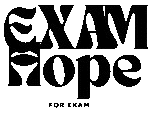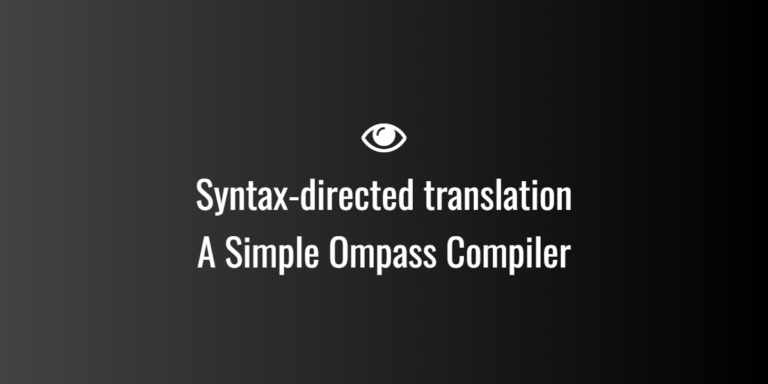Error detection and correction are crucial in communication systems to ensure that data is transmitted accurately and reliably across a network. In real-world applications, data can become corrupted during transmission due to noise, interference, or other factors. Error detection allows the receiving system to identify errors, while error correction enables it to correct those errors automatically or request retransmission of the data.
1. Error Detection
Error detection is the process of identifying whether the data received at the destination is the same as the data sent by the source. Errors can occur during transmission, which may alter the content of the data. Common techniques used for error detection include:
1.1 Parity Bits
- Even Parity: A parity bit is added to the data so that the total number of 1s in the data (including the parity bit) is even.
- Odd Parity: A parity bit is added to make the total number of 1s in the data (including the parity bit) odd.
- Limitation: Parity is simple but can only detect errors that change the number of bits in the data (i.e., single-bit errors or odd numbers of bit errors).
1.2 Checksums
A checksum is a value calculated from the data that is transmitted. The receiver computes the checksum value of the received data and compares it with the transmitted checksum. If the values match, the data is considered correct.
- Process: The data is divided into fixed-size blocks, and the checksum is the sum of the block values. The sum may be truncated to fit a particular size (e.g., 16-bit or 32-bit).
- Limitations: Checksums can detect most errors, but they may fail to detect all errors, especially when multiple bits are altered.
1.3 Cyclic Redundancy Check (CRC)
CRC is a more powerful error detection technique that treats the data as a polynomial and performs polynomial division to detect errors.
- Process: The sender appends a CRC code to the data, which is based on a divisor polynomial. The receiver performs the same division on the received data. If the remainder is zero, the data is assumed to be error-free.
- Commonly used in: Network protocols like Ethernet, disk storage systems, and telecommunications.
- Advantage: CRC can detect many types of errors, including burst errors, and is widely used due to its robustness.
1.4 Hamming Code
Hamming code is a method of detecting and correcting single-bit errors in transmitted data. It involves adding redundancy bits (parity bits) at certain positions in the data.
- Process: The redundancy bits are inserted at positions that are powers of 2 (e.g., 1, 2, 4, 8, etc.). These bits help to identify and correct errors at the receiver’s end.
- Advantage: Hamming code can detect and correct single-bit errors and detect two-bit errors.
2. Error Correction
Error correction involves not only detecting the errors but also correcting them. When an error is detected, error correction techniques ensure that the original data can be reconstructed without requiring retransmission. Some common error correction techniques are:
2.1 Forward Error Correction (FEC)
FEC adds extra redundant data to the message that allows the receiver to detect and correct errors without needing retransmission. FEC is particularly useful in real-time communication, such as video conferencing or streaming, where retransmission of lost packets is not feasible.
- Process: The sender encodes the data with redundancy before transmission. The receiver uses the redundant information to detect and correct errors in the received data.
- Types: There are two main types of FEC codes:
- Block codes: The data is divided into blocks, and redundancy is added to each block (e.g., Hamming code, Reed-Solomon code).
- Convolutional codes: Redundancy is added continuously over time, not just in blocks.
2.2 Automatic Repeat reQuest (ARQ)
ARQ is an error control method in which the receiver detects errors and requests the sender to retransmit the data if errors are detected. The sender keeps track of sent packets and waits for acknowledgment (ACK) from the receiver. If the receiver detects errors, it sends a negative acknowledgment (NAK), prompting the sender to retransmit the data.
- Types of ARQ:
- Stop-and-Wait ARQ: The sender sends one data packet and waits for an acknowledgment before sending the next packet. If no acknowledgment is received within a timeout period, the packet is retransmitted.
- Go-Back-N ARQ: The sender can send multiple packets before waiting for acknowledgment, but the receiver can only acknowledge the last correctly received packet. If an error is detected, all subsequent packets are retransmitted.
- Selective Repeat ARQ: The sender can transmit multiple packets, and the receiver can individually acknowledge each packet. If an error is detected in a specific packet, only that packet is retransmitted.
2.3 Reed-Solomon Code
Reed-Solomon codes are widely used error correction codes that work by adding redundancy to a data message. These codes are particularly effective for correcting burst errors.
- Process: Reed-Solomon coding involves creating additional “parity symbols” from the original data symbols. These parity symbols help in the recovery of lost or corrupted data.
- Applications: It is used in CDs, DVDs, QR codes, and deep space communication.
2.4 Turbo Codes and LDPC Codes
Turbo codes and Low-Density Parity-Check (LDPC) codes are modern error correction techniques that are used in high-performance communication systems, such as 4G LTE and satellite communication.
- Turbo Codes: Turbo codes use two or more convolutional codes combined with an interleaver. These codes are highly effective in low signal-to-noise ratio (SNR) environments.
- LDPC Codes: LDPC codes use a sparse bipartite graph for encoding and decoding, making them more efficient for error correction than traditional codes. LDPC codes are used in advanced communication systems and satellite communication.
3. Comparison of Error Detection and Correction Techniques
| Feature | Error Detection | Error Correction |
|---|---|---|
| Purpose | Detects errors in data transmission. | Detects and corrects errors without needing retransmission. |
| Common Methods | Parity Check, Checksums, CRC | FEC, ARQ, Hamming Code, Reed-Solomon, Turbo Codes |
| Overhead | Low overhead, typically involves small redundant bits (e.g., parity bit). | High overhead, requires significant additional data (e.g., redundant codewords). |
| Real-time Capability | Limited real-time capability. | High real-time capability (e.g., FEC). |
| Efficiency | Efficient for detecting errors but not correcting them. | More efficient for error recovery but incurs additional delay. |
4. Applications of Error Detection and Correction
- Digital Communication Systems: Error detection and correction are widely used in communication protocols like TCP/IP, Ethernet, and wireless communication standards (e.g., Wi-Fi, LTE).
- Storage Systems: Disk drives, CDs, and DVDs use error correction techniques to ensure data integrity.
- Satellite Communication: Error correction techniques like Reed-Solomon are employed in satellite communication to handle noise and data corruption.
- Video Streaming: Forward Error Correction (FEC) is commonly used in video streaming to ensure smooth playback even under network disruptions.
- QR Codes: Reed-Solomon is used in QR codes to ensure that the data can be read even if parts of the code are damaged.
5. Conclusion
Error detection and correction are critical for ensuring reliable data transmission in modern communication systems. Techniques like parity bits, checksums, CRC, and Hamming codes are used for detecting errors, while forward error correction (FEC), ARQ, and Reed-Solomon codes are used for error correction. Each method has its strengths and weaknesses, and choosing the right method depends on factors like the type of transmission medium, network conditions, and application requirements.




